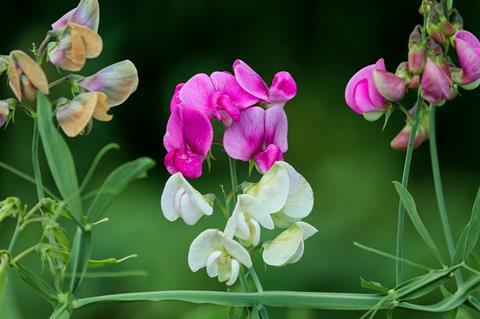Researchers have found that a duplication of the genes plays a key role in the processes governing the formation of symbiotic structures between nitrogen-fixing bacteria and leguminous plants.

A paper describing the researchers’ findings was published in the journal Nature Plants on October 31.
“If scientists can learn more about how the rhizobia-legume symbiosis happens, maybe we can engineer other types of plants than just legumes that can form such a symbiosis, or even fix nitrogen directly,” said Kong Zhaosheng, a microbiologist with the State Key Laboratory of Plant Genomics at the Chinese Academy of Sciences in Beijing and a co-author of the paper.
“This could radically reduce our dependence on manure and synthetic fertilizer, or even eliminate their need entirely. This has long been the Holy Grail of sustainable agriculture.”
In most legume species, the rhizobia become entrapped in the host through curly hairs on the outside of the roots. The bacteria then “infect” plant cells, proliferating inside them, via tubular infection threads.
These threads are in turn enveloped by a membrane produced by the host plant, forming a structure akin to organelles (the “organs” that perform different functions inside a cell). This nitrogen-fixing organelle-like structure is called the symbiosome, which has radically reorganized the cell to accommodate the rhizobia bacterium.
It was known that the plant-derived symbiosome membrane provides an interface for exchange of nutrients and “signals”—chemical directives—between the two symbionts, plant and bacterium, and that the plant-cell cytoskeleton (the filament-like internal scaffolding within cells) plays a key role in this interface.
In the common liverwort, Marchantia polymorpha—one of the earliest plants to conquer land some 400 million years ago, there is a protein, the kinesin-like calmodulin-binding protein, or KCBP. Kinesins are “motor” proteins that work to transport molecules throughout the cells of many different types of organisms by “walking” along internal microtubule structures.
KCBP however is unique to plants and in liverworts is essential to the growth of their rhizoids, root-like structures of these early plants. The protein is thought to be one of the key evolutionary developments that allowed plants to adapt to land.
Tantalizingly, in the barrelclover plant (a type of legume), the genes that are responsible for production of this KCBP are activated just about everywhere in root hairs at the infection-thread stage.
So the researchers focused on the KCBP-encoding genes, using BLAST (Basic Local Alignment Search Tool) analysis, a program that compares genetic or protein sequences of specific organisms to databases of such sequences to find similar regions.
They found that in the barrelclover’s genome, there is a duplication of them. And where this duplication of KCBP-encoding genes occurs, their activity appears solely related to interactions between the barrelclover and the rhizobia bacteria that enable the formation of the symbiosome.
A separate phylogenetic analysis—an evolutionary history of genetic changes in ancestral species over time—found that this duplication of KCBP-encoding genes only occurs in the legumes that form symbiosomes.
The researchers believe that the rhizobia are hijacking the plant’s duplicate KCBP to direct a cross linking of microtubules within the cell to control how the central vacuole in symbiotic cells forms. In this way, it governs symbiosome development.
The team now aim to identify what is driving the activation (expression) of the duplicate KCBP genes, to find the genes that act in concert with those governing the duplicate genes to regulate rhizobia accommodation in the cell, and to explore how chemical signalling works across these two very different kingdoms of life, plant and bacteria, to govern the symbiosis.







No comments yet